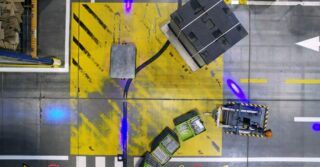Today’s plants and machines take up a lot of space. But only a fraction of their surface area has a real impact on the production process itself. Much more space in the production hall is dedicated to moving products from place to place. The time has come to break free from the limitations of one-dimensional product transportation and prepare the ground for a new era of productivity.
Conveyor belts, rotary tables, carousels – there are many ways to move products between processing stations. But they all have one thing in common: they don’t contribute to the production process itself. On the contrary, they take up valuable floor space and reduce the overall output per square meter.
“For machine and equipment manufacturers, the transport of products is simply a necessary evil,” says Dario Rovelli, mechatronics expert at B&R. In addition to all the space occupied, conventional product transport systems have a second costly disadvantage: they make the machine inflexible.
Henry Ford’s breakthrough in industrial mass production was achieved through belt conveyors and rigorous production cycles. But what once took productivity to a new level now weighs down on her. Rovelli says: “To meet the demands of smaller batches, shorter life cycles, and increasing customization, we need to remove the shackles of rigidly sequential production.”
The time has come to break free from the limitations of one-dimensional product transportation and prepare the ground for a new era of productivity.
More flexibility thanks to track systems
In recent years, new technologies have made production much more flexible, especially track systems such as SuperTrak and ACOPOStrak. They allow you to move each product independently, and also serve as an additional axis at the processing stations. In addition, they also allow the separation and combination of product flows at full speed.
“The track systems have marked a milestone,” explains Rovelli, “by synchronizing asynchronous processes.” In other words: productivity is no longer limited to the speed of the slowest machining station. By adding multiple instances of slower stations, the incremental investment brings an exponential performance gain.

The solution to the traditional model of linear product transport creates a multidimensional production space
Mass personalization
“The track systems enable personalization – for the first time – in an economically sustainable way,” says Rovelli. Wherever there is a clear sequence of processing steps to be dynamically adapted to each product, the track system provides the necessary flexibility. However, there are other applications where the sequence of steps itself is constantly changing. These applications require complete freedom in the production flow.
“Production visionaries have had a dream for many years,” says Rovelli. “They dream of completely solving the linear model of product transport and creating a multidimensional production space – where every product moves independently from station to station, without being limited to a rigid, sequential production flow.”
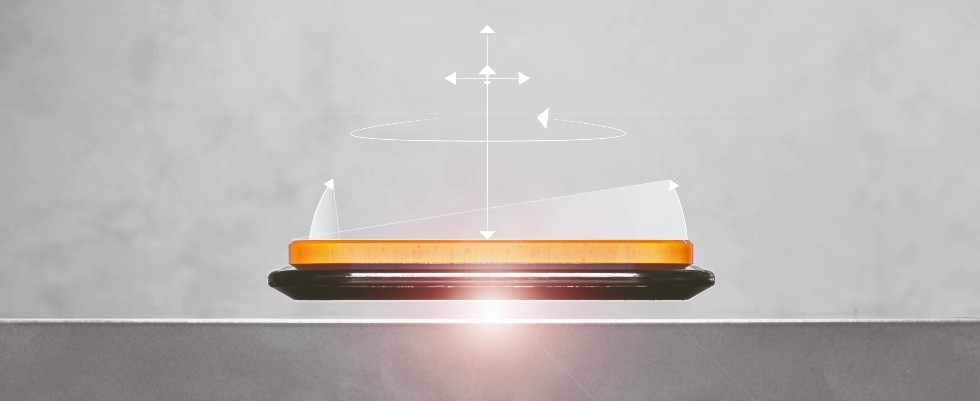
Magnetic levitation technology allows products to be moved and manipulated with six degrees of freedomy
Non-contact, noiseless, precise
What has long sounded like wishful thinking is now becoming a reality thanks to modern magnetic levitation technology. Controlled by an invisible hand, the carts glide freely above the surface, accelerating and maneuvering skillfully in every direction.
“Ever since I saw the technology in action for the first time, I was fascinated,” says Rovelli. “It is non-contact, silent and extremely precise. I immediately realized how profound this would be in shaping the manufacturing world for years to come. And now, magnetic levitation has reached a level where it can bring major benefits to industrial applications.”
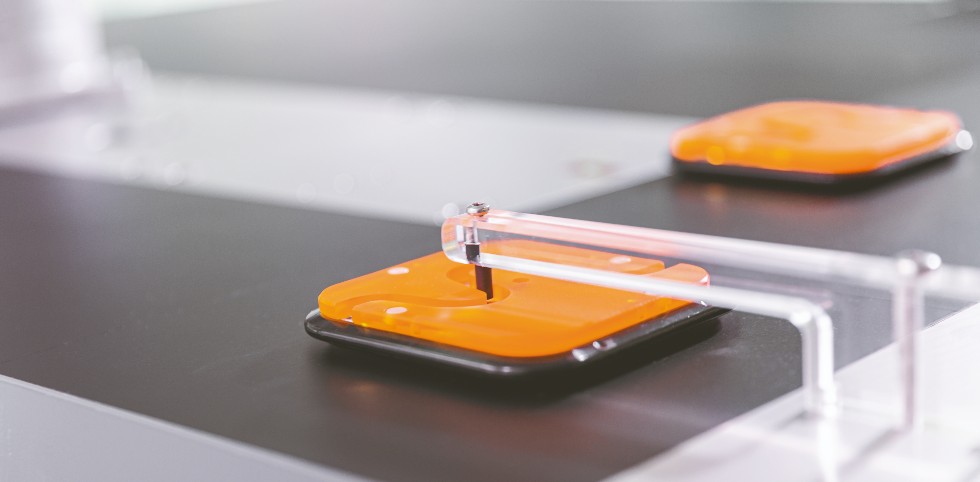
The shuttle with the workpiece in the ACOPOS 6D can, for example, move along a CNC path, allowing a rigid fixture of the machining tool
The future of production
The same vision prompted B&R to fully integrate magnetic levitation technology into its automation system. ACOPOS 6D now heralds the transition from strictly linear production to an open, adaptive production space. “We are talking about nothing but a revolution in the way products are manufactured, assembled and packaged,” says Rovelli.
In discussions about Industry 4.0 and the Industrial Internet of Things, the concept appears many times in which products follow their own path through the production process. “It was often dismissed as a pipe dream,” says Rovelli, “but now we have the technology to make that vision a reality.” With ACOPOS 6D, one machine can simultaneously produce different product variants or even completely different products. Each product follows its own path to the stations it actually needs. “We are witnessing the birth of production in a swarm.”
How it works?
The solution works on the principle of magnetic levitation: carts with built-in permanent magnets hover above the surface of the electromagnetic motor segments. The modular motor segments measure 240 x 240 mm and can be freely arranged into any shape. Shuttles of various sizes carry loads weighing from 0.6 to 14 kilograms at a speed of up to 2 meters per second. They can move freely in two-dimensional space, rotate and tilt along three axes and provide precise control of the levitation height. All of this together gives you six levels of freedom of movement control.
The ACOPOS 6D enables the operation of up to four times as many shuttles in a given space than other systems on the market thanks to the unique ability to simultaneously control four shuttles on the same engine segment. The shuttles can also be used as axes in processing stations. A workpiece-carrying trolley, for example, may travel in a CNC path, allowing the machining tool to be fixed in position. Weighing stations can be completely eliminated as each shuttle can also be used as a very precise balance. This allows the dimensions of the designed machine to be reduced.
The carts levitate freely, without any contact or friction. Since there is no abrasive wear, there are also no parts that need to be maintained. With a stainless steel cover on the motor segments, ACOPOS 6D offers IP69K protection, making it ideal for cleanrooms or food and beverage production.
The system is fully integrated with the R & amp; R ecosystem. This enables the shuttles to be synchronized with servo axes, robots, track layouts, and machine vision cameras with microsecond precision. Shuttle route planning takes place in a special controller connected to the machine network via POWERLINK, which means that it does not affect the performance of the network or the machine control system. In the case of systems with more than 200 segments or 50 shuttles, more controllers can be synchronized with each other.
Unlike comparable systems, each ACOPOS 6D cart is assigned a globally unique identifier. During commissioning, the controller immediately recognizes the position of each shuttle on the engine segments, allowing production to begin without time-consuming homing sequences or manual input by the operator. The shuttles offer a positioning repeatability of ± 5 µm, making the ACOPOS 6D ideal for high-precision positioning applications, such as in the electronics industry, or the assembly of mechanical and electronic components.
Configuration
ACOPOS 6D offers almost unlimited possibilities in machine design, while being extremely easy to set up. Advanced algorithms ensure that the shuttles follow the optimal path, avoiding collisions and minimizing energy consumption. Designers can concentrate on their main task: developing optimal machine processes for maximum productivity.
The system was developed in collaboration with Planar Motors Inc. – a company with over 15 years of experience in research and development in the field of magnetic levitation technology for industrial production.


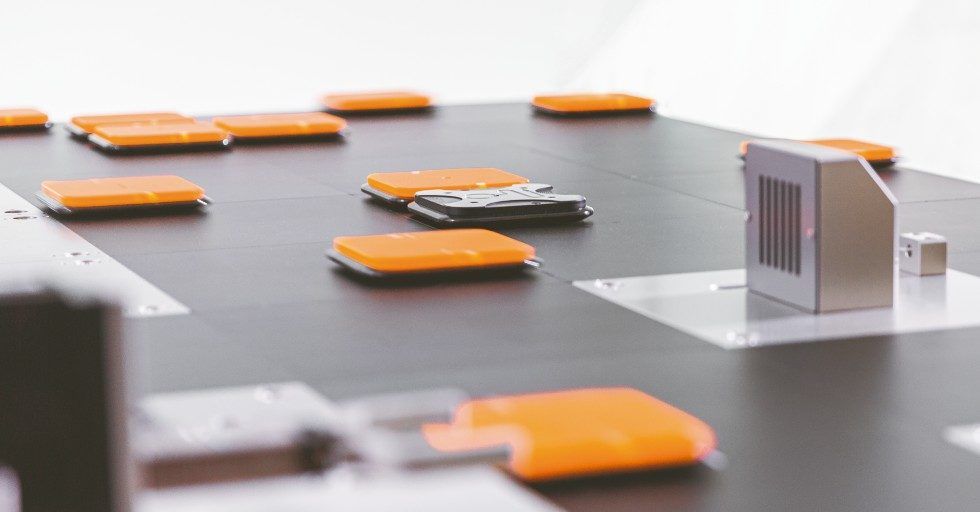
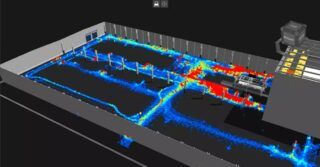
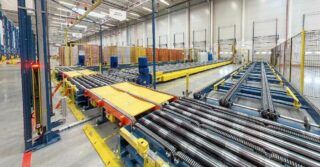
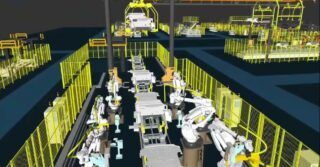
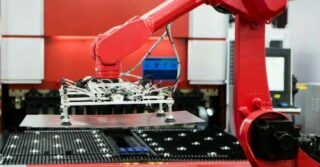
![Forecasts, Opportunities, and Challenges for the Polish Industry in 2024 [ANALYSIS] Forecasts, Opportunities, and Challenges for the Polish Industry in 2024 [ANALYSIS]](https://industryinsider.eu/wp-content/uploads/xIndustry-40-320x167.jpg.pagespeed.ic.o8zijDQlIJ.jpg)
